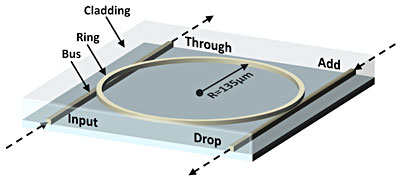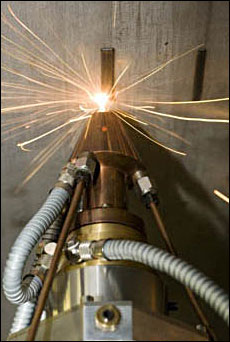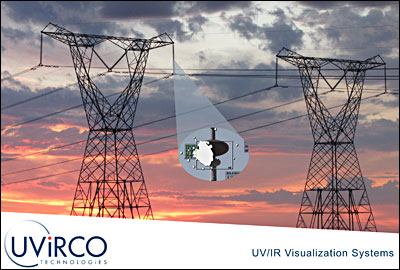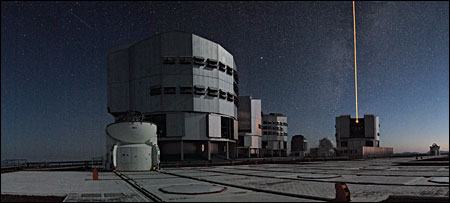Photonics in the Southern Hemisphere
By Hank Hogan, Contributing Editor
Those maps where south is up aren't that far off, at least as far as some photonics technologies and suppliers are concerned. Take the case of Finisar Australia, part of the Finisar Corp. of Sunnyvale, Calif.
The Australian-born-and-Sydney-based subsidiary is one of the world's leading suppliers of reconfigurable optical add/drop multiplexers, said Steve Frisken, chief technology officer. "This is a key technology in automating of the routing of dense WDM (wavelength division multiplexing) systems, so it's at the core of the network transport system."
 Chinese networking-equipment maker Huawei Technologies Co. Ltd. must agree with Frisken's assessment. The Longgang District, Shenzhen-based company recently upped its demand for Finisar Australia's optical processing modules by 40 percent.
Chinese networking-equipment maker Huawei Technologies Co. Ltd. must agree with Frisken's assessment. The Longgang District, Shenzhen-based company recently upped its demand for Finisar Australia's optical processing modules by 40 percent.
There are other examples in the Southern Hemisphere of leading photonics-based technologies, as well as cases of innovative research. A look reveals this to be true in Australia, South Africa and Brazil. But the photonics world hasn't been turned entirely upside down yet, as the case of Chile and the European Southern Observatory (ESO) illustrates.
Finisar Australia's success has been due in part to its exploitation of liquid crystal on silicon technology, said Frisken. While related to what is found in high-definition televisions, this version of the technology has been adapted to telecom needs in the company's wavelength-selective switching products.
An important advantage of the company's offerings is that they allow spectrum reprogramming on the fly. One version of dense WDM chops spectrum into 50-GHz chunks, while the other divides it into 100-GHz segments. With Finisar Australia's products, that allocation can be changed as needed.
Frisken noted that the company's founders were all telecom veterans, forming the startup after a downturn a decade ago. Today Finisar Australia does much of its own manufacturing, employing 300 or so. The company's sales come almost entirely from outside Australia, with many major telecom equipment suppliers among its customers. Finisar Australia also draws from the world when recruiting. The chance to work in a dynamic technology area helps and Sydney's reputation as a good place to live is alluring, said Frisken.
But the location isn't an unmixed blessing when trying to attract talent to Australia, he added. "The barrier we have is when people realize how far it is from the rest of the world."

Researchers in Australia developed this microring resonator, which could prove useful in future telecom applications. (Image: David Moss, University of Sydney)
Considerably closer are Australian universities where researchers are doing innovative photonics work. The list includes physics professor David Moss of the University of Sydney and laser physics professor Barry Luther-Davies of the Australian National University in Canberra, the country's capital. Both are engaged in nonlinear photonics research, and both recently reported on their work.
Moss is part of a group that demonstrated an integrated multiple-wavelength source that could prove suitable for next-generation telecom and on-chip optical processing. Their microring resonator operates in the important-to-telecomm 1400- to 1700-nm range, and it does so in an unusual way.
"Our device works on third-order nonlinearities as opposed to most parametric oscillators that use the second-order one," said Moss.
As for Luther-Davies, his group demonstrated nanowire waveguides, which could be useful in future all-optical telecomm devices. There also could be other commercially important applications, said Luther-Davies. "Right now optical performance monitoring seems very promising and may well form a point to start a commercial venture." (For more, See: For nonlinear optical processing, things do — and don't — add up from the September 2010 issue of Photonics Spectra).
Around the Cape
To the west of Australia and across the Indian Ocean, the Republic of South Africa sits at the southern tip of the continent. There the Pretoria, South Africa-based National Laser Center, part of the country's Council for Scientific and Industrial Research (CSIR), funds research, fosters education and helps build up the photonics infrastructure through a laser loan/rental pool program.

A laser seals a water tank crack using a technique developed by in South Africa. (Image: CSIR)
National Laser Center manager Ndumiso Cingo said that three-fourths of the center's money goes to research into laser materials processing, source development, biophotonics and other areas. About one-third of the center's funding comes from the government, with the rest coming from contract research and development income. As part of that work, the center recently developed and demonstrated a laser-beam-welding and leak-sealing technology. The project was done in conjunction with engineers from Eskom, the national power utility company, said Cingo. "This system allows for maintenance work to be done on leaking water tanks by doing laser-based welding in situ without having to empty the tank."
In talking about the future, he pointed to the Photonics Initiative of South Africa, which has a goal of turning the country into a global player. The National Laser Center's rental pool program will be an important element of that strategy, enabling wider access to cutting-edge technology.
One local firm that could both benefit from, and contribute to, this photonics-boosting effort is SDI Lasers of Pretoria. It supplies advanced high-repetition-rate transversely excited CO2 lasers that are used in the aerospace and other industries for composite materials testing, paint removal and other applications.
Chief technical officer Neil du Preez noted that 95 percent of the systems produced by SDI Lasers are exported, with many of them going to the US. In the coming years, he expects that the demand for the company's lasers will grow.
"As the global trend towards environmentally friendly paint removal techniques continues, alternatives such as laser-based paint removal will replace the older technologies," he said.

South Africa-based UViRCO makes a camera that detects the UV emission from a corona discharge. (Image: UViRCO)
UViRCO Technologies is another South African company with innovative photonics-based technology, said marketing manager Riaan Rossouw. The Pretoria-based company makes a camera that detects the UV emission from a corona discharge. Such discharges represent lost power and money.
Originally the detection technology, which was developed by CSIR in conjunction with Eskom, worked only at night. It was then refined to work during daylight, and UViRCO licensed it, with systems today that allow for video capture and inspection from helicopters, trains and cars.
In South America
Heading further west, two South American countries that sit below the equator — Brazil and Chile — play an important role in the photonics world, although in different ways.
Brazil is among the top 20 countries in the world in terms of scientific paper citations, said Anderson Stevens Leônidas Gomes. An associate professor of physics at the Federal University of Pernambuco who focuses on nonlinear optics, Gomes chaired the just concluded Latin American Optics and Photonics Conference in Recife, Brazil.
The Brazilian government has made a commitment to boosting the photonics community, in part by funding research and establishing institutes. It also has a variety of incentives to boost industry. There are, for example, more than 500 business incubators to transform university research into spinoffs.
The local economy is doing quite well and there are photonics-related resources that have yet to be exploited, noted Gomes. "One big opportunity, of course, is solar energy."
He explained that Brazil is well situated in this regard. It has areas that have intense sunlight on an almost daily basis.

Artist's sketch of early morning on Paranal, showing the ESO's Very Large Telescope (foreground) and a laser being fired to create a guide star for adaptive optics (background). (Image: ESO/H.H.Heyer)
Although not in the solar business, Saô Carlos, Brazil-based Opto Electrônica S.A. is a local firm that makes photonics products. Chief among these, in terms of global impact, might be its ophthalmic and odontology offerings. Its dental mirrors are found in 60 percent of the world's dental clinics, the company claims. It also has a new yellow laser, generating the wavelength through Raman shifting, that could be useful in medical applications. It should soon be approved.
At the other end of the continent, Chile is home to the operations of the ESO. The consortium recently announced plans to build a 42-m telescope there, which could allow the detection of potential life-bearing planets circling other stars.
Domenico Bonaccini Calia, a laser physicist with ESO, noted that for both current and future sites, more than telescopes are involved. Other leading-edge photonics technologies used include adaptive optics, lasers to produce guide stars, fiber temperature sensors, ultrastable laser combs, and large-area visible and infrared detectors.
Because the technology is frequently pushed to the limit, ESO engages in research and development. Sometimes the result is a technology transfer, as can be seen in a recent commercialization agreement involving Raman fiber lasers.
With regard to photonic components and services bought by the consortium, being able to purchase more cutting-edge goods and services from closer sources could reduce costs.
ESO already interacts with local universities and its presence impacts the surrounding photonics community. Along with the new planned observatories, that could change the current balance of the photonics world.
In expressing his own opinion about the situation in South America, Bonaccini Calia said, "There is a growing photonics industry which will probably reach a critical threshold where they can start collaborating or bidding."
[email protected]